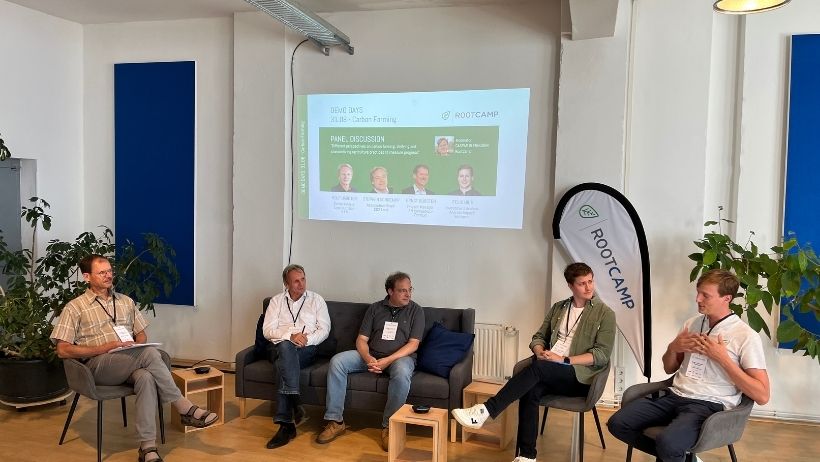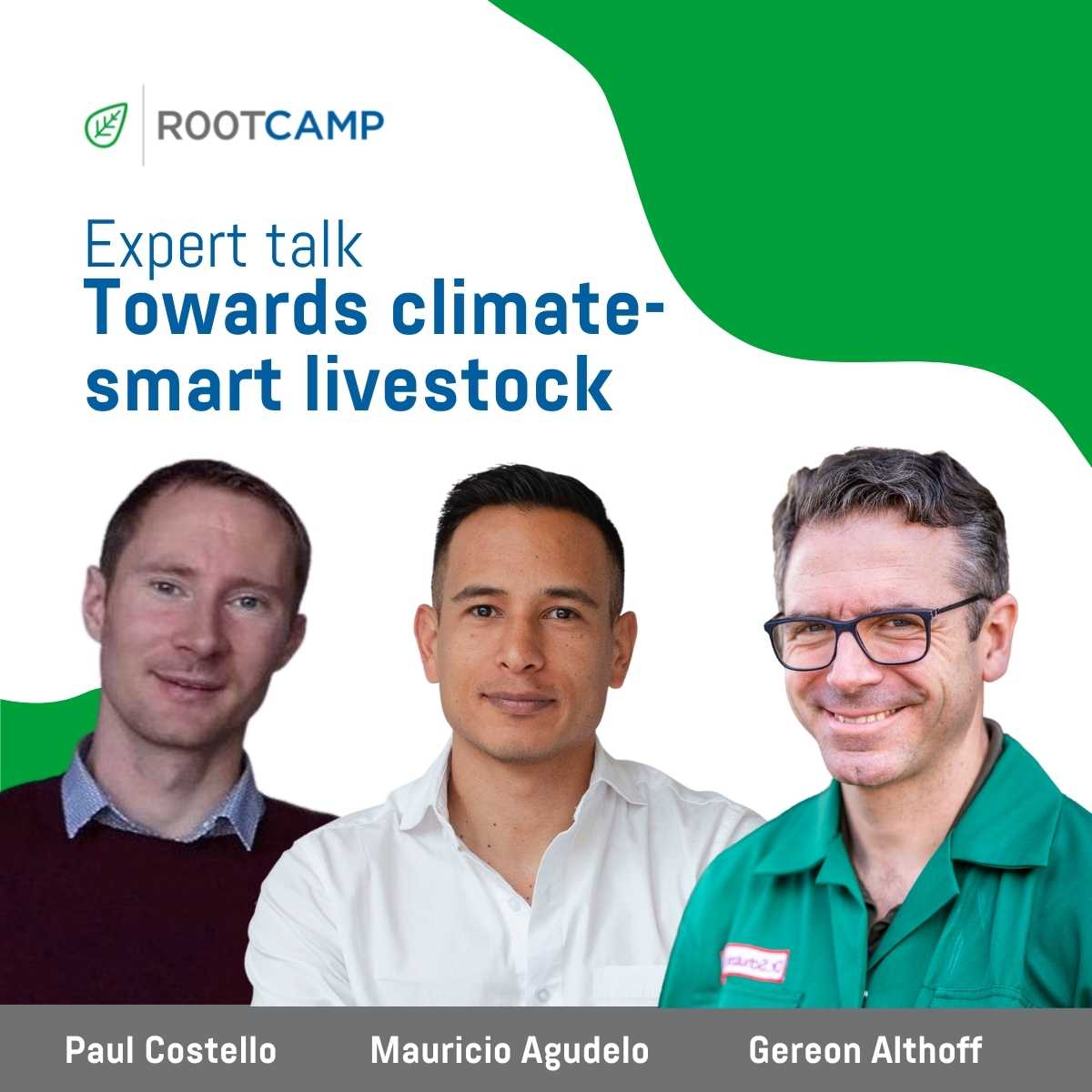The livestock sector faces enormous environmental challenges like high emissions, water and land usage, as well as changes in consumer behavior and the increasing importance of animal welfare. To be in line with the climate objectives, emissions need to be reduced significantly. As part of the BLIVE project, Innovation Hub RootCamp collected seven best practices that are improving the management of livestock farm.
PRACTICE #1 – eCow bolus sensor to monitor cows
eCow (United Kingdom) bolus helps dairy farmers to increase milk yield, profitability and decrease methane emissions by providing accurate real-time insights from inside the cow’s stomach over its entire life. It provides information to the farmers related to stomach pHfor diet adjustments and reduction of emissions, temperature for earliest sickness and fertility detection, and motion for early calving detection. By using the eCow internal sensors, farmers can save the farm £72,000 per year which is a ROI of 12 for the eCow solution.
/BLIVE%20RootCamp%201.jpg?width=820&name=BLIVE%20RootCamp%201.jpg)
eCow provides accurate real-time insights from inside the cow’s stomach. (Source: eCow)
PRACTICE #2 – IoT/ML farm management and decision support system
poultryNET (Serbia) is a farm management and decision-support solution, developed by DunavNet, that is based on a combination of IoT and ML/AI technologies. It enables creation and maintenance of optimal environmental conditions in farm buildings by 24/7 monitoring of a range of parameters (air temperature and humidity, light intensity, air flow, CO2, NH3) at multiple locations. Notifications about suboptimal conditions are generated by the system based on the industry best practices. With poultryNET the operational status of relevant machines (air conditioning, feeders, drinkers) as well as presence of people are monitored by automatic analysis of video and audio recordings. The same recordings are then used to count the chickens, detect dead ones, and continuously estimate the weight of the chickens, thus significantly reducing the manual labor, and providing far better understanding of the flock growth. By using poultryNet farmers have reported a decreased mortality rate by 20% (from 5% to 4%) and saving around 2% of annual revenue, improvement feed conversion ratio, and 30% of labor saving.
/Blive%20RootCamp%202.jpg?width=820&name=Blive%20RootCamp%202.jpg)
poultryNET is farm management and decision support solution based on a combination of IoT and ML/AI technologies. (Source: DunavNet)
PRACTICE #3 - Unlocking the potential of grass
Grassa (The Netherlands) works on a biorefinery technology to extract proteins from fresh gras. These proteins are the perfect alternative to soy and can be fed to monogastric creatures (pigs, chickens, dogs). The concept has been evaluated and researched in the period 2015 – 2020 in Ireland (project biorefinery Glass), Denmark (Aarhus University) and the Netherlands (Grassa’s own research). The claims of emission reduction and production levels for dairy cows have been confirmed as the use of grass protein replaced the soy. In addition, by replacing up to 60% of opened grass in the feed of cows with the extracted proteins around 30% nitrogen and phosphate emission reduction could be achieved, as well as 5-15% methane emission reduction and potentially additional earnings on grass for (dairy) farmers, since the processed opened grass (after protein extraction) could be use as roughage for cows.
/Blive%20RootCamp%203.jpg?width=820&name=Blive%20RootCamp%203.jpg) Grassa is working on a biorefinery technology for extracting proteins from fresh grass.(Source: Grassa)
Grassa is working on a biorefinery technology for extracting proteins from fresh grass.(Source: Grassa)
PRACTICE #4 - Increase of calf rearing efficiency through early detection of disease by usage of sensors and AI
The Calf Monitoring and Management System developed by Futuro Farming (Germany) uses sensor technology and artificial intelligence to monitor the movement behavior and detects outbreaks of disease from the day one after the calf birth. Based on the recommendations for action provided by the system, farmers are preventing severe disease and reducing animal mortality. A case study showed that farmers were able to reduce calf mortality from 7% to 3% within one year. This leads to savings in medication (antibiotics, anti-inflammatories) and a reduction in emissions since fewer animals must be bred to have the same production.
/Blive%20RootCamp%205.jpg?width=820&name=Blive%20RootCamp%205.jpg)
Calf Monitoring and Management System developed by Futuro Farming (Germany). (Source: Futuro Farming)
PRACTICE #5 - Livestock Water Recycling (LWR)
Livestock Water Recycling's climate-smart system (Canada) provides livestock farmers the ability to increase production by managing manure in a sustainable and value-producing manner. The system extracts up to 70% of the water from manure while concentrating and segregating the nutrients. Prior to entering the system, the manure is cleared from the freestall barn using a flush system. The solids from the manure are then mechanically removed. The first wage of the system removes 95% of the phosphorus from the manure, while the remaining liquid manure rich in macro and micronutrients go through further filtration and purification process creating a concentrated nutrient product containing potassium and ammonia, as well as clean and reusable water. With this technology, farmers not only have savings by reducing the number of lagoons to store manure, but could also use the extracted nutrient for crop fertilization or as an additional revenue stream for sold fertilizers off-farm.
/Blive%20RootCamp%206.jpg?width=1971&name=Blive%20RootCamp%206.jpg)
The climate-friendly system of Livestock Water Recycling (Canada). (Source: Livestock Water Recycling)
#6 - Individual CV of an animal created by live sensor data
BioCV (Germany) is a digital assistance system that supports farmers in their daily work and enables permanent monitoring of the animals. In the event of important or acute incidents, farmers receive a notification via app. An ear tag that gathers physiological data like the activity and temperature is installed on the ear of the animal. The data is used to create an individual identity of the animal and saved in the cloud – even when changing the owner. The data is then integrated into the API for usage in all existing management systems. The system has allowed farmers, who have tested the solution, to identify established routines and automatize or digitalize those without complicating them.
PRACTICE #7 – Pathogens free earthworms for animal feeding
Corbiota (Germany) is a patented pathogen free, naturally produced and certified earthworm for chickens feeding. By feeding chickens with Corbiota’s earthworms, complex microbiota is transferred to them, strengthening the animal's eubiosis (the natural balance of microorganisms in their gut and immune system) and triggering their natural instincts. Chickens grow up stronger, healthier, and more resistant towards diseases, reducing the need for antibiotics treatment - one of the biggest global challenges in today’s farming.
➡️ Want to learn more about how to boost the livestock sector? Find here more blog articles about livestock innovations.
/rootcamp_logo_white_2022.png?width=2123&height=630&name=rootcamp_logo_white_2022.png)

/RC%20logo%202022.png?width=2325&height=703&name=RC%20logo%202022.png)






